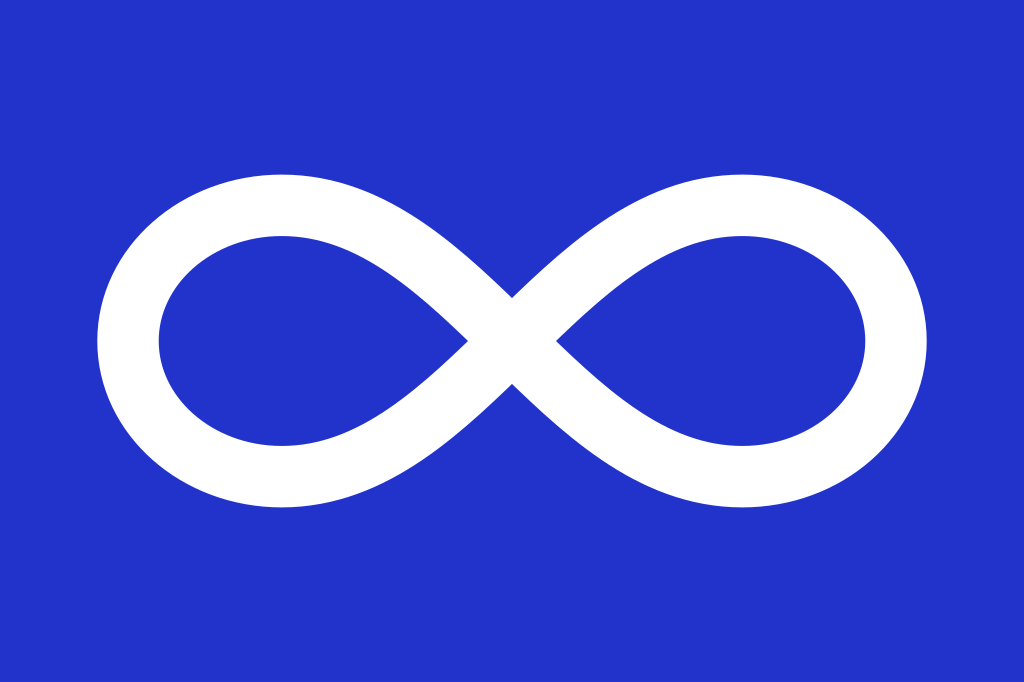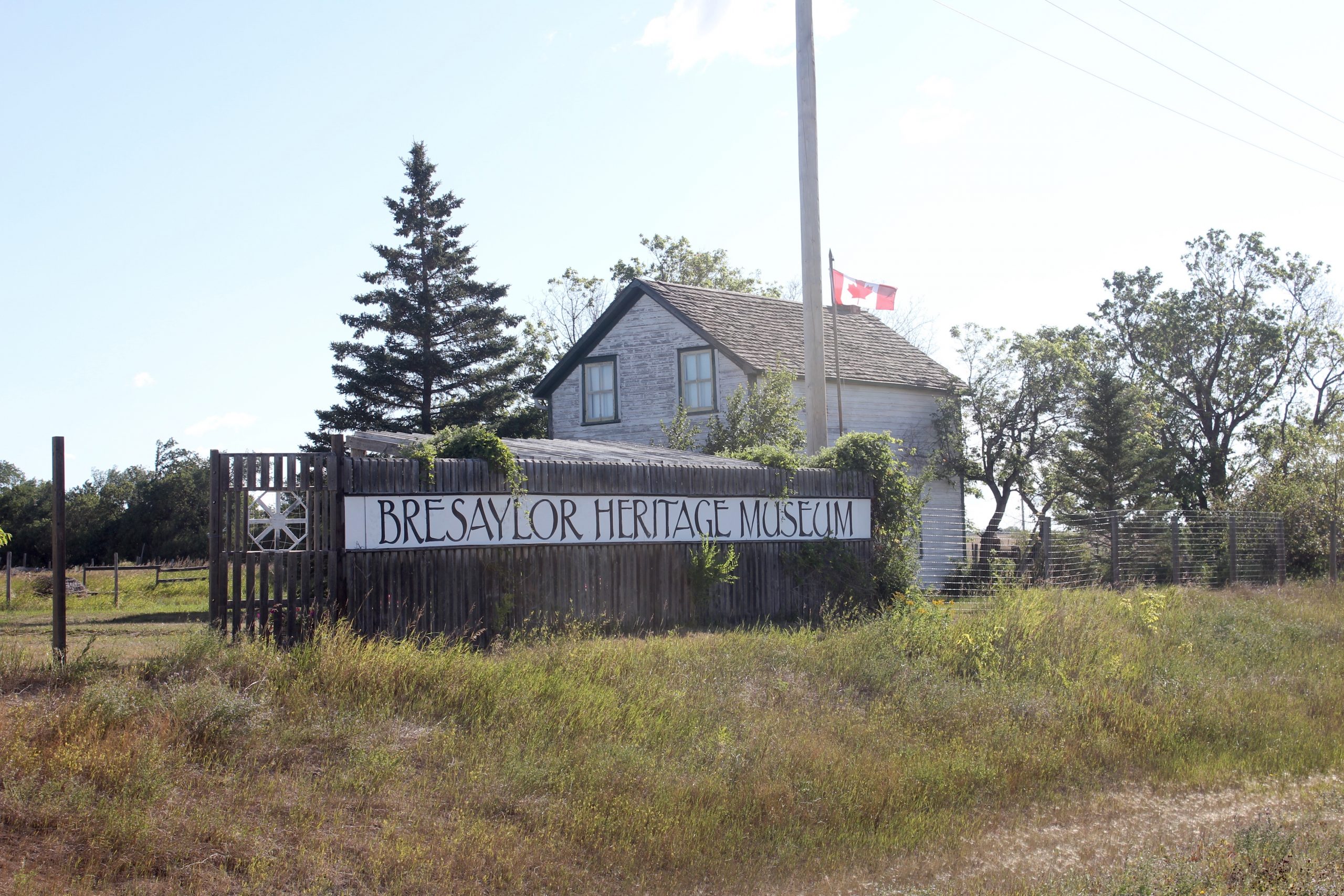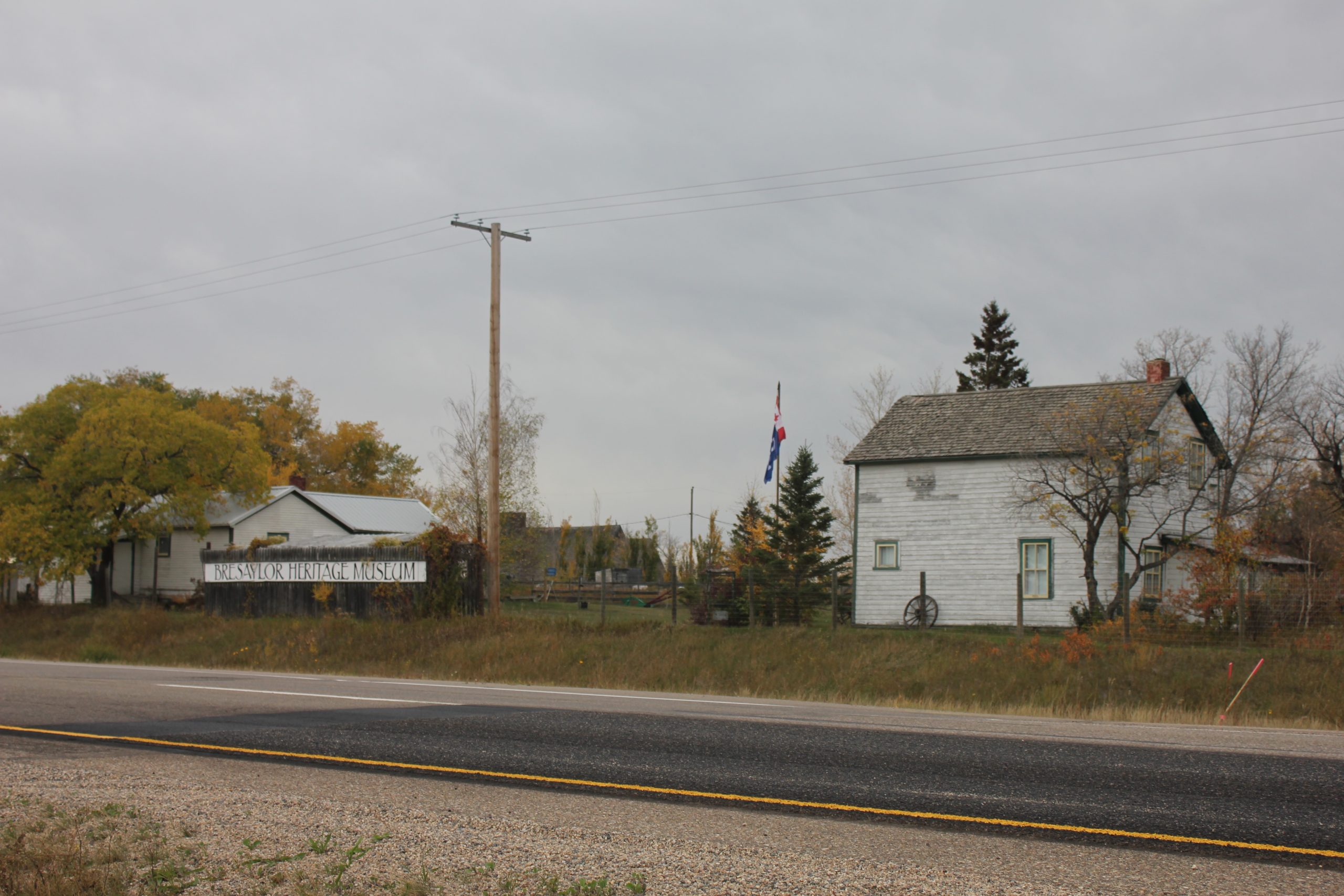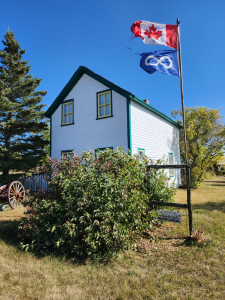Our History

HISTORY OF THE Bresaylor Heritage Museum

Charles Bremner

Henry Sayers

Peter Taylor
Charles Bremner descended from Alexander Bremner and Elizabeth (Besty) Twatt. Alexander Bremner was born in 1795 in Caithness, Scotland, and travelled to North America in 1812 to begin work with the Hudson’s Bay Company. Betsy was the daughter of Magnus Twatt, also an employee of the HBC, and Margaret Mackegonne. Charles Bremner brought his family west after experiencing devasting family losses in 1881. As noted in The Other Side of Rebellion, by Margaret Stobie (1986), “Charles Bremner had another and more compelling reason than simply land-seeking to leave the Red River. The year 1881 had been a terrible one for him and his wife, Emily. In the first five months they had lost three of their eight children, a boy and two girls, aged 17 months, 3 years, and 12 years. There had been no epidemic; the deaths were simply part of the high mortality rate among children.” Unfortunately, the Bremner family continued to experience difficult circumstances following their relocation. In 1885 the Bremner family, along with the Henry Sayer family and a few others from the area, were taken captive by Chief Poundmaker’s men during the uprising close to Battleford. Once the Bresaylor families were released, they went to Battleford, and several of the Bresaylor men were arrested and charged with Treason. While the Bresaylor men were imprisoned, General Middleton stole $5367.00 worth of furs from Bremner . Well-known Metis author Maria Campbell has retold this story as the story of “Joseph’s Justice” in The Road Allowance People. (Read more here about Charles Bremner’s Furs).
The Henry Sayer family also experienced great loss prior to their journey west. Mary Sayer (nee Bremner), the wife of Henry Sayer, died shortly after giving birth to twins in June of 1881. The twins both died shortly after this as well. Being closely connected to his wife’s family, Henry travelled west with them in 1882. Henry Sayer was the son of Pierre Guillaume Sayer and Josephte Frobisher. Guillaume worked with the North West Company and later the Hudson’s Bay Company (HBC) after the two companies merged in 1821. In 1849 Guillaume was charged by the HBC for illegally trafficking furs, as the Hudson’s Bay Company wanted to have full control over trading at this point. While Sayer was found guilty of this charge, he went free, as hundreds of armed Métis men surrounded the courthouse during the trial to express their resistance to the HBC monopoly on trade. After this point, the HBC had to rely on being competitive in trade instead of forcing a monopoly. A great victory for the Métis and all traders at the time (Barkwell 2014). (Read more here about the Sayer Trial, 1849).
Alex and Peter Taylor descended from James Taylor and Mary Inkster. James Taylor was born in 1794 in Morwick, Birsay, Orkney, and came to North America in 1817 to work for the Hudson’s Bay Company (HBC). Mary was the daughter of James Inkster, also an employee of the HBC, and Mary, a Cree woman. James Taylor is listed as one of the original River Lot owners at lot 27 in St. Paul, MB, in 1835. Alex and Peter’s brother, John Taylor, was a member of the Convention of Forty, Manitoba’s Provisional Government led by Louis Riel, and was elected to the Legislature of Manitoba in 1874 and 1878 (Barkwell 2011). (Read more here about the Convention of Forty).
These are just three of the many historical stories of Bresaylor. In 1901 most families in Bresaylor identified as Half Breed and declared their mother tongue to be Cree. But only a generation later, many of these families were denying their Indigenous roots to avoid the racism that came with the colonization of the West. “Finding Bresaylor” is a project with the goal of reclaiming our rich culture and identity, so much of which was lost as the settlers flooded west during the continual displacement of the Indigenous peoples who got in the way of Canada’s expansion, including the Métis.


BUILDINGS
The Museum ‘Office’ Building ( Federal Grain Agent’s house)-(article from 2006 Newsletter)
The Museum Office building has gone through many changes over the years – changes quite well documented in photographs. Here is a bit of its story:
James Massie built a one-room house to stay in while at SW 7-46-19, a couple of miles south of Bresaylor, sometime between 1915-1917. In 1918, Jack McTaggart married Susan Sayers. They purchased the building from James Massie and moved it into Bresaylor. Jack McTaggart added a kitchen and a porch, and that is where the family lived and where their three daughters – Margaret (Elle): Susan Eupheamie ‘Pheame’ (Tokle); and Emm (Carter) – began their lives. Sadly, Jack died suddenly in 1925. Susan remained in Bresaylor and worked at many jobs to support her family. Then moved to North Battleford in 1929. The next occupants of the house were Malcolm and Ivy Gould starting in 1930. Malcolm was a section man for the CNR. Their son Wesley Edwin was born in the house July 15, 1931. (He stopped in years ago to show his wife his birthplace).
The next occupants were the Sinclairs.
Bert Dival was Federal Agent from 1948-1954. George Kugler from 1954 to 1957; Morley (Ruth) Phillips from 1958-1963; and Denis (Irene) Lacoursiere from 1964-1968. Theses families all lived in the house, which had become a Federal Agents house. Federal sold out to the Pool in 1968 and then both elevators were managed by Tony Chasse. He didn’t live in Bresaylor, but commuted from Highgate. Joe Sayers bought the house from the Lacoursiers I believe. And after Joe died it became the property of the Museum.
Other than the additions made by Jack McTaggart, it isn’t clear who made the other alterations to the building – or who added the north room. Because it is still quite intact and no major renovations made, its story is quite evident to anyone interested in taking a closer look. It is (along with the main Museum building) a big artifact in the Museum collection….
Oh, yes, and I Velma Foster, lived there after my church home was hit by the tornado in 1989. During that time we finished the Bresaylor history book. I always liked living in the that draughty little house.

"Alex Lennie House"
The Alex Lennie House is a Municipal Heritage Property occupying one lot in the former Village of Bresaylor within the Rural Municipality of Paynton No. 470. The property features a two-storey, wood-frame house built in 1907.
The heritage value of the Alex Lennie House lies in its status as the oldest building, and one of the few remaining buildings, on the Bresaylor townsite. The house was built in 1907 by Jack Reagan as a one-storey structure. By 1909, a second storey had been added to the structure. Today, the house stands as one of only a handful of structures in the former Village.
The heritage value of the Alex Lennie House also lies its varied historical uses within the community. James Sayers operated a butcher shop in the building from 1907 until sometime in the 1920s. During World War I, Bresaylor’s telegraph office was located in the building as well. It was during this period that the building first became a residence with Jack Reagan and Jim and Jessie Brown living on the second floor. The butcher shop closed in the late 1920s and the telegraph office moved to the train station at about the same time. Shortly thereafter, the building was purchased by Alex and Mary Lennie for use as a residence. The Lennies lived in the house until 1966.
The heritage value of the Alex Lennie House also lies in its association with “Little Joe” Sayers. In 1968, the house was purchased by Sayers who used the building to store antiques and family heirlooms. Sayers operated the house as an informal museum and made his intention clear that he wished the collection to be available for public viewing after his passing. Sayers died in 1982 and by early 1983, the Bresaylor Heritage Museum Association had been formed to take over responsibility for the collection and the building. The Bresaylor Heritage Museum now uses the Alex Lennie House for its primary exhibits.
The heritage value of the Alex Lennie House also lies in its status as a representative example of early-twentieth century vernacular architecture in Saskatchewan. The building’s utilitarian nature is reflected in its simple, rectangular form and wood-frame construction. The historical integrity of the interior floor plan and finishing materials contribute to its representative status.

CEMETERY

